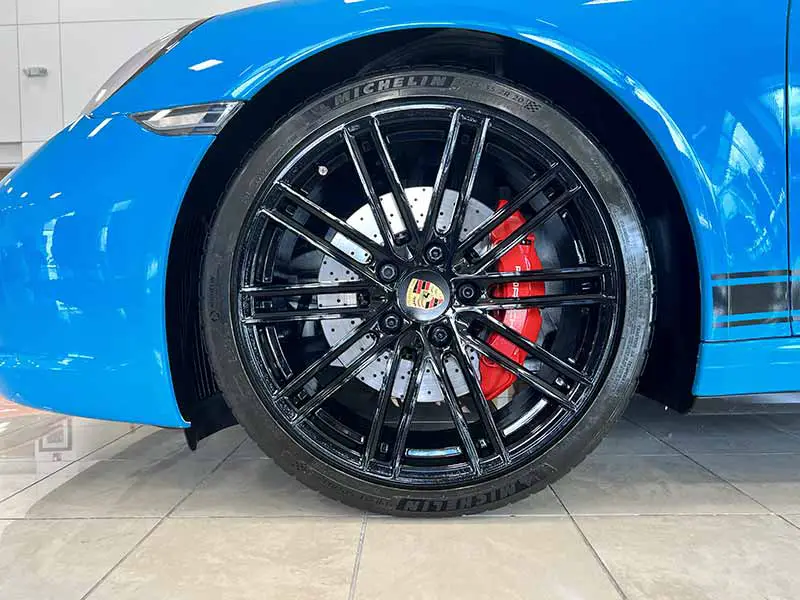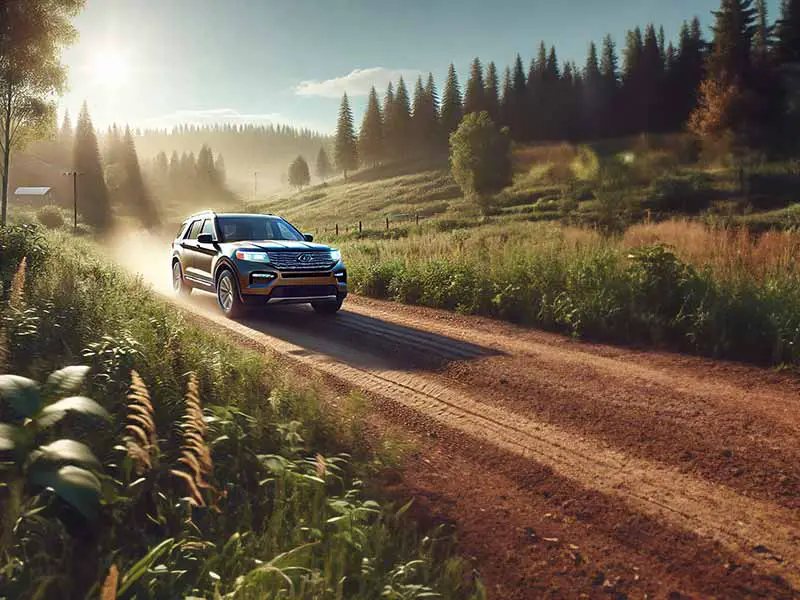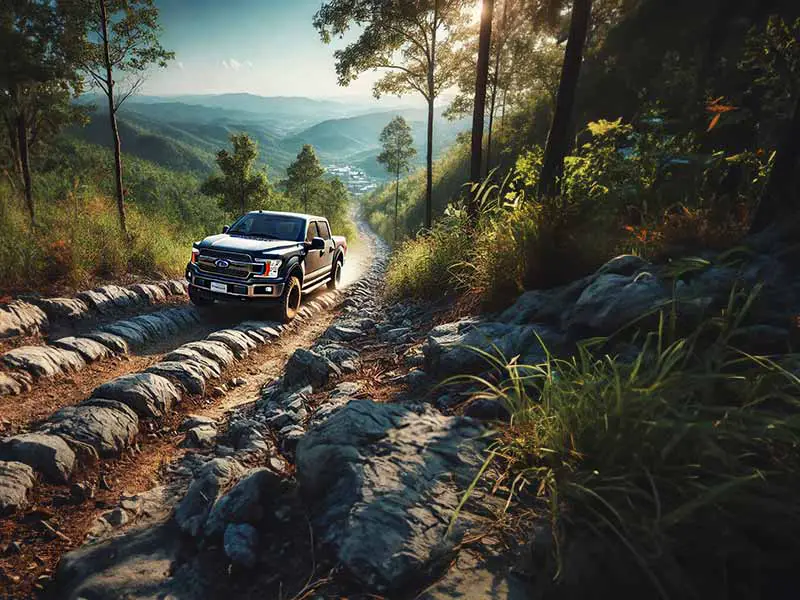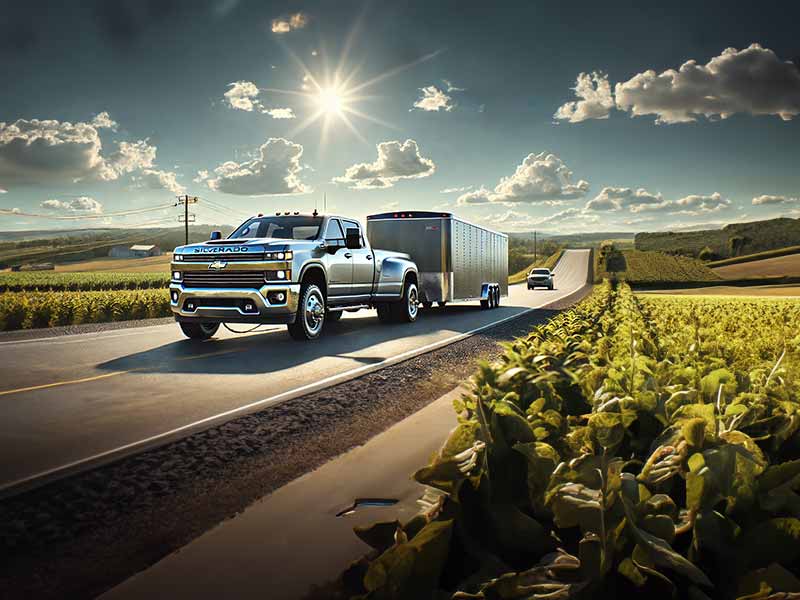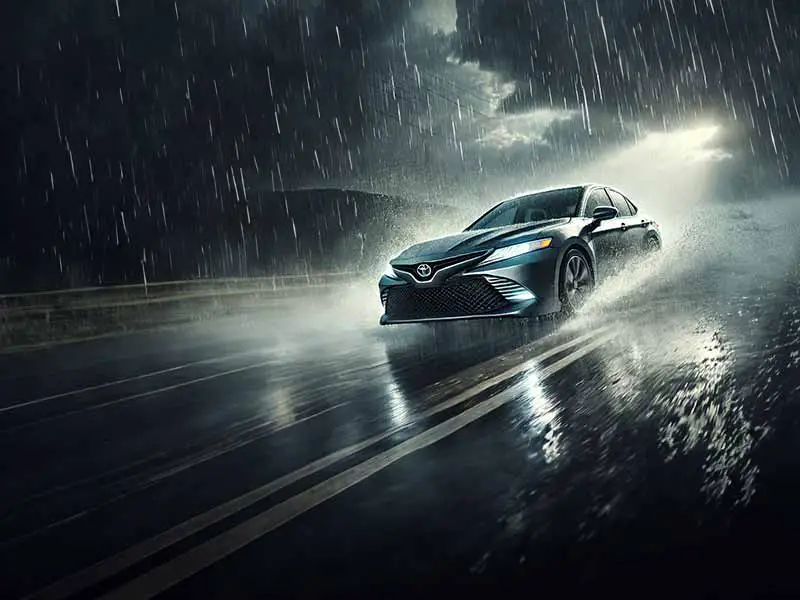Low profile tires are not a specific feature designed into tires, but are simply when the tire has a much shorter sidewall than regular tires usually do.
Over the last few decades, sidewall heights have become shorter on all types of cars and trucks. As tire manufacturers have been able to create stronger yet more comfortable sidewalls and design trends have shifted to lower and lower aspect ratio tires, stiffer sidewalls and larger rims have become more popular.
What Are Low Profile Tires?
Low profile tires are generally accepted to be any tire that has a sidewall aspect ratio less than 50. Low profile tires are meant to reduce sidewall flex on sports cars to improve traction and steering response.
As with most things, there are pros and cons to low profile tires. You may be surprised to learn all of the compromises that have to be made to get that sporty low profile stance.
Let’s take a closer look.
Low Profile Tires Vs Regular Tires
What is the difference between low profile tires and regular tires? The main difference is the height of the sidewall. When the sidewall is less than 50% of the width of the tire, it is considered a low profile tire.
The aspect ratio of a tire is molded into the sidewall of every tire. It is the middle of the three common tire size numbers on the sidewall. For instance, a tire with a size of 235/45/18 would be considered a low profile tire.
The middle number is the sidewall aspect ratio. The first number is the width of the tire tread in millimeters. The second number, the sidewall height, is the percentage of the tread width.
In this case, the sidewall height is 40 percent of 255 millimeters which equals 102 millimeters or just over 4 inches for us Americans. The last number is the rim size in inches.
Yes, tire sizes molded into your tire sidewall use three different measurement systems for each dimension – metric, percentage, imperial standard. It’s a bit ridiculous if you ask me, but no one did.
Low Profile Tires Pros And Cons
To cut to the chase, the real benefit of low profile tires is mostly just aesthetics. They do look good. Unfortunately, there are a lot of downsides to the good looks. Yes, you do technically get better wheel response, more fuel efficiency, and increased grip. However, most of these benefits are negligible or end up being offset by other problems that low profile tires created.
Don’t get me wrong – I love the look of low profile tires. In fact, I have low profile tires on my car. I have previously put on taller sidewall tires and they made a dramatic improvement in how smooth the car rode. Generally speaking, it still handled just as good as it did with the larger rims and shorter sidewall.
Let’s look at the details of the specific advantages and disadvantages of low profile tires.
Low Profile Tires Pros
Good Looks
There’s no denying it, low profile tires look stunning. At least most people feel this way, myself included. The mainstream market has demanded larger rims and low profile tires. That’s why most car manufacturers offer sports cars direct from the factory with low profile tires.
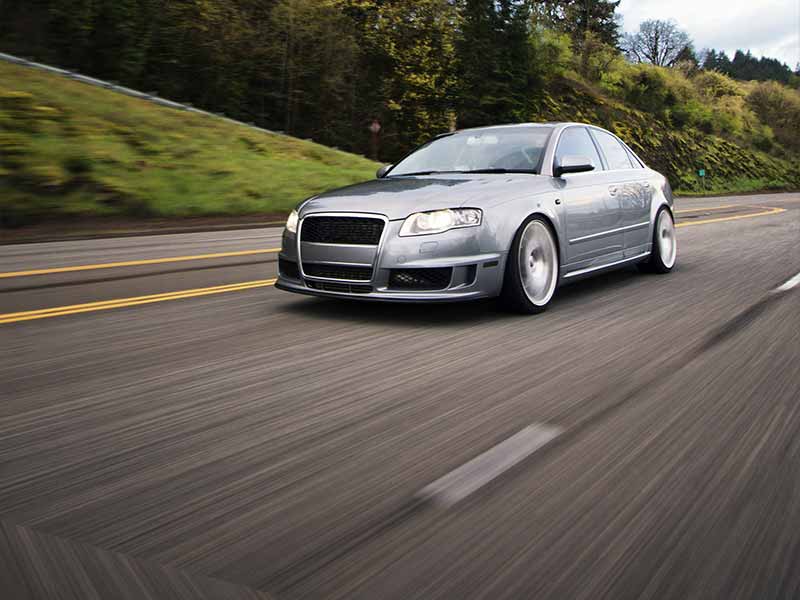
Better Steering Wheel Response
The lack of sidewall flex directly contributes to a more direct steering response and feel. Steering is more communicative and you can better feel the road surface through the steering wheel.
I will say, that while this is true, power steering systems tend to make this benefit fairly insignificant. This is particularly true of steering systems that use drive-by-wire. Or in other words, vehicles that use electronics to communicate steering inputs from the steering wheel to the steering rack.
Power steering systems are still physically connected from the steering wheel all the way to the contact patch. With drive-by-wire you have no physical connection and you’re relying on vibrations through the floorboard and seat cushion.
Improved Vehicle Handling
Reduced sidewall flex can help improve handling by preventing the sidewalls from stretching and folding over in hard cornering. This additional support can help allow for softer compounds in the tire rubber blend which will also create increased grip.
In reality, shorter sidewalls are not required to improve handling. If you look at any race car that I can think of, from Formula 1 to NASCAR, they all have taller sidewall tires.
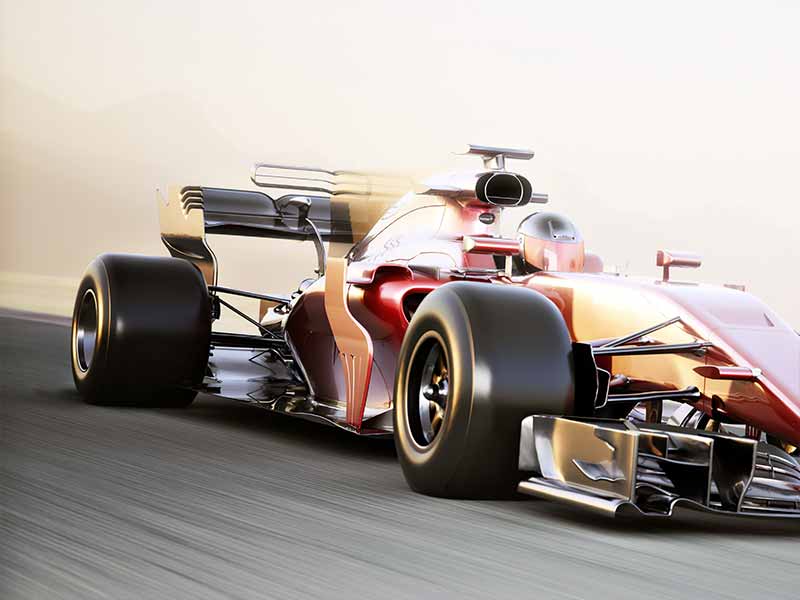
If you’ve ever paid any attention to professional drag racing, dragsters often use very low tire pressure on very tall sidewall rear tires to get the most launching grip. This allows them to get better traction on irregular surfaces and get the best launch possible.
Most improved traction on a street vehicles comes from a wider contact patch area than from stiffer sidewalls.
Better Fuel Economy
Just as dragsters use low tire pressure to increase grip which increases friction, low profile tires reduce sidewall flex which reduces friction and increases fuel efficiency.
Unfortunately, improved fuel consumption is somewhat offset but the additional unsprung mass of the larger wheels.
Low Profile Tires Cons
The cons of low profile tires outweigh the pros. Like I said earlier, I personally still have and love low profile tires. But you need to have all of the accurate tire information to make an informed decision.
Rougher Ride
People often don’t realize it, but tires are the most critical component in your suspension system. The rubber formula and the sidewall flex absorb bumps before your actual suspension components even begin to react.
The reduced sidewall height of low profile tires greatly reduces a tires ability to absorb harsh impacts from potholes and uneven road surfaces. Less shock absorption in the tires means this work has to be transferred to the other components.
Unfortunately, the spring rate and shock absorption of the suspension system can’t react sufficiently enough to provide the smooth ride that normal tires can provide.
Increased Unsprung Weight
Low profile tires require larger rims which are heavier and increase unsprung mass. The metal rims are much heavier than the air-filled rubber tire.
Unsprung mass is weight that the motor has to rotate to begin the wheels moving the vehicle forward. This offsets fuel efficiency benefits of stiffer sidewalls and lower rolling resistance.
Imagine adding weights to the tips of fan blades and you may be able to imagine that it will take longer for the fan to begin spinning as fast. This is because the motor has to overcome the additional weight on the fan blades.
Increased Suspension System Wear
Since the tires lack the ability to absorb shocks like standard tires are able to do, the suspension system has to pick up the slack. Unfortunately, the springs and shocks are unable to deal as well with short and harsh impacts and this takes its toll on the suspension system over time. Ultimately it will lead to premature suspension failure.
Increased Chance Of A Flat Tire
The lack of low profile tires having the ability to absorb sharp impacts from potholes and curb strikes as well as higher aspect ratio tires means that they will be far more likely to puncture and have a blowout than higher profile tires.
Also, less-flexible tires will be more likely to puncture over sharp rocks and other objects that a higher profile tires would be able to handle more easily.
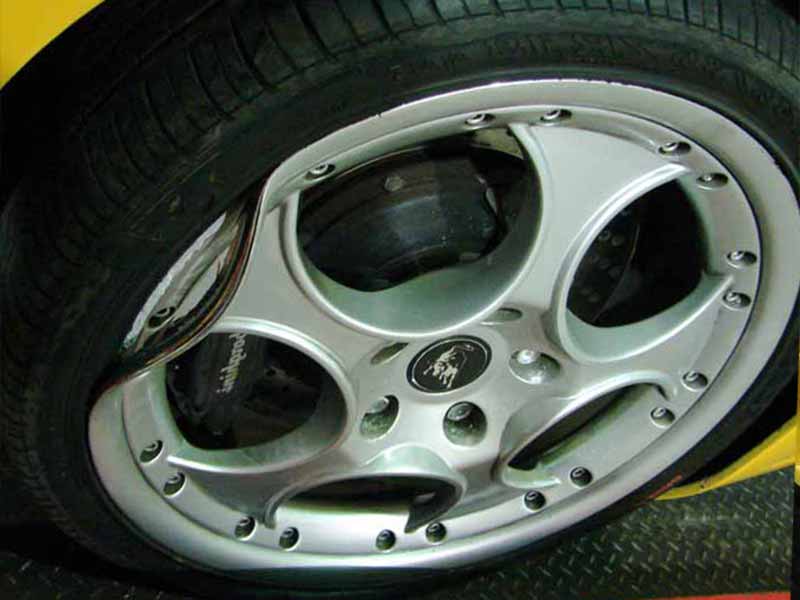
Increased Chance Of Bent Rims
The most expensive downside of owning low profile tires are increased chance of bent rims. Just like with the increased chance of a flat tire, whether the tire punctures or not, the wheel is going to take more abuse.
One bad pothole or high speed curb strike and you nice wheel will end up with a bent lip or out-of-round barrel.
New rims, especially the large rims that low profile tires require are expensive. Forged wheels that are stronger and less likely to get damaged are also very expensive.
Often, more minor bends and dents can be fix by a wheel repair shop but the area that was damaged will be weaker and more likely to bend in the same spot again.
Low Profile Tire Pressure
Some people wonder if the air pressure of low profile tires should be increased. This usually isn’t the case. You should almost always inflate your tires to the pressure indicated on the sticker in your door jamb.
There may be some unique circumstances where the load index will require more air to meet the load carrying capacity. This will usually only happen with low profile tires on truck wheels that are used regularly for carrying or towing heavy loads.
If this sounds like you, I recommend you consult with your local tire shop about whether you should increase air pressure and by how much.
Frequently Asked Questions
How Long Do Low Profile Tires Last?
A low profile tire won’t last any longer or shorter than a traditional high profile tire. People do tend to think that low profile tires wear out more quickly which tends to be true. But this isn’t due to the short sidewall.
Low profile tires tend to be sport tires that are designed for better grip and an aggressive driving style. They usually have softer compounds which wear out more quickly. This would be true of high profile tires with the same tread compound.
Are Low Profile Tires More Expensive?
Low profile tires tend to be more expensive due to the fact that they are usually high performance tires. These are generally speaking, more advanced tires that can handle higher speeds and have better wet and dry grip.
The advanced tread pattern and rubber formulas required for the higher speed ratings cause them to cost more in general.
Are Low Profile Tires Good For Long Trips?
Low profile tires are not the best choice for long trips if you have a choice. This is only because you’re much more likely to get flat tires with the lower aspect ratio than taller sidewall tires.
A higher aspect ratio tire will ride more comfortably as well which is important for long trips.
Do Low Profile Tires Lower Your Car?
Low profile tires can technically lower your car but this isn’t recommended. By simply installing a lower aspect ratio tire onto the same rims you will lower your vehicle, but you will also be reducing the overall size of the wheel and tire assembly.
What this means is that the total diameter of your tire will be smaller than the vehicle manufacturer intended. The side effects of this will be that your speedometer will no longer read the correct speed and the wheel and tire assembly will look visibly smaller inside the wheel well and look odd, not unlike the look you’ve seen when a spare tire is mounted on a car.
Some may like this look, and often speedometers can be adjusted to read the proper speed.
Stay tuned for a future article about plus sizing. In short, plus sizing is increasing rim size while reducing sidewall height to keep the total diameter of the combination the same. This will not lower your car or truck, but it will keep the speedometer accurate, properly fill the wheel wells, and ensure systems like anti-lock brakes and your electronic stability program work as designed.
Are Low Profile Tires Bad In Rain?
Sidewall height has no affect on how a tire will perform in the rain. The tread pattern will have the most affect on how well a tire will grip in wet weather.
New tires will have the deepest tread grooves and do the best job of moving water away from the contact patch. Tires with only 4/32″ of tread depth should be replaced because they will be severely limited in there ability to prevent hydroplaning.
Are Low Profile Tires Good In Snow?
Sidewall height has little affect on snow traction. However, low profile tires are typically high performance tires that are not designed for winter weather conditions. You should never use summer tires in snow or freezing temperatures.
There are all-season tires that are low profile and capable of handling light snow and some colder temperatures. Low profile winter tires are best for deep snow and extreme winter weather.
Do Low Profile Tires Get More Flats?
Unfortunately this is true. You’re much more likely to get a flat tire with low profile tires since the tire will not be able to handle potholes and curb strikes as well. It will also be more likely to puncture over sharp rocks and similar objects.
Resources
Below are some links you may find helpful when learning about tires
- Unsprung weight vs sprung weight – why heavy wheels are bad news – eEuroparts
- Low profile tires: Pros and cons – Discount Tire
Final Thoughts
Low profile tires have become more and more popular over the last couple of decades. The main appeal is the good looks. Many tout the performance benefits of low profile tires. While there are benefits, they are mostly insignificant when compared to the problems caused by lower profile tires.
I personally love the looks of low profile tires myself and that’s what I have on my car. Despite the rougher ride and more frequent bent wheels.
Regular tires can provide most of the same benefits low profile tires can but with a smoother ride and much lower chance of bent wheels and more frequent flat tires.
Despite this bit of knowledge, you’ll likely do as I did and opt for the better looking low profile tires for your car or truck.
